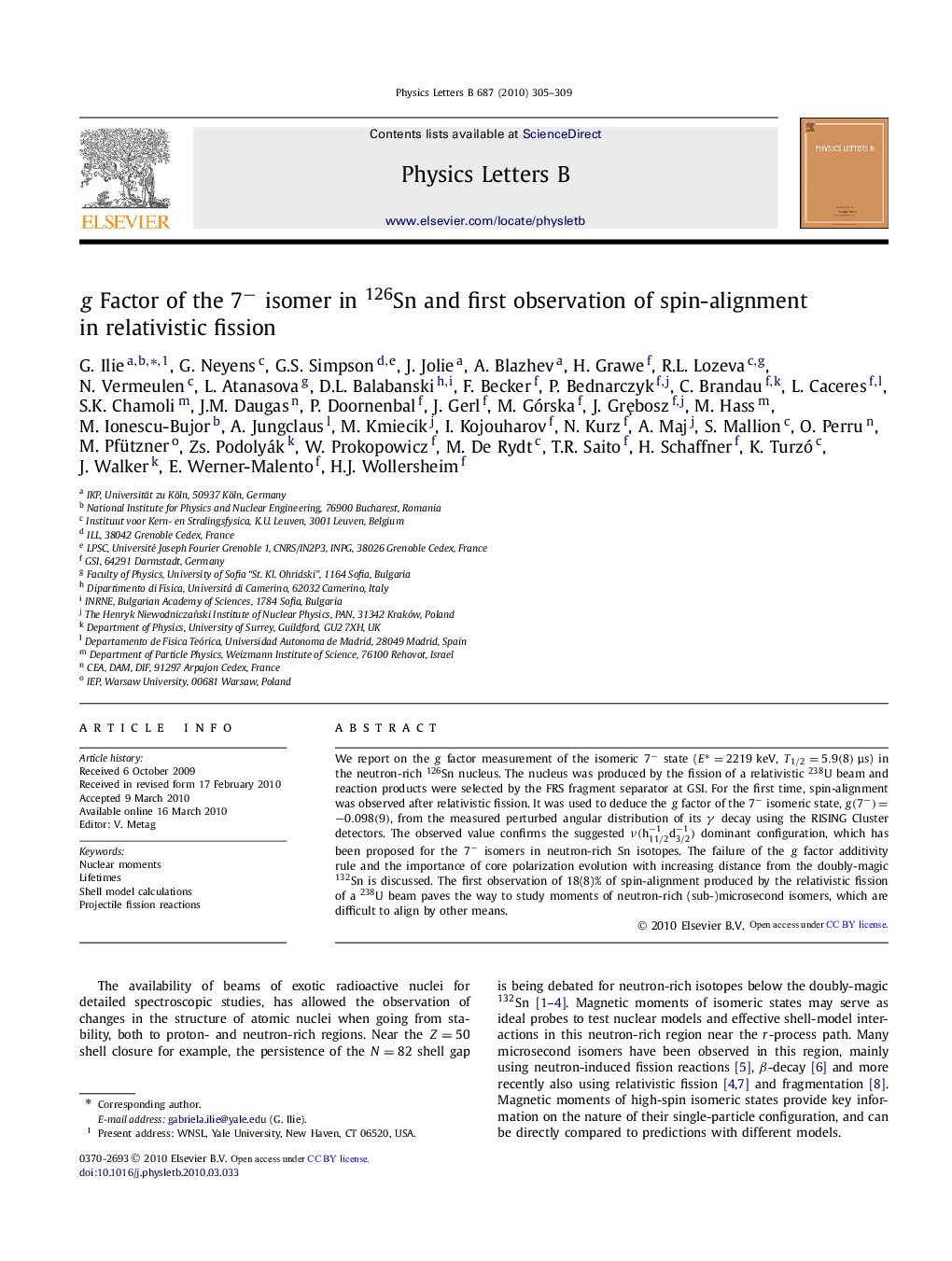| Article ID | Journal | Published Year | Pages | File Type |
|---|---|---|---|---|
| 1851902 | Physics Letters B | 2010 | 5 Pages |
We report on the g factor measurement of the isomeric 7−7− state (E*=2219 keVE*=2219 keV, T1/2=5.9(8) μsT1/2=5.9(8) μs) in the neutron-rich 126Sn nucleus. The nucleus was produced by the fission of a relativistic 238U beam and reaction products were selected by the FRS fragment separator at GSI. For the first time, spin-alignment was observed after relativistic fission. It was used to deduce the g factor of the 7−7− isomeric state, g(7−)=−0.098(9)g(7−)=−0.098(9), from the measured perturbed angular distribution of its γ decay using the RISING Cluster detectors. The observed value confirms the suggested ν(h11/2−1d3/2−1) dominant configuration, which has been proposed for the 7−7− isomers in neutron-rich Sn isotopes. The failure of the g factor additivity rule and the importance of core polarization evolution with increasing distance from the doubly-magic 132Sn is discussed. The first observation of 18(8)% of spin-alignment produced by the relativistic fission of a 238U beam paves the way to study moments of neutron-rich (sub-)microsecond isomers, which are difficult to align by other means.
